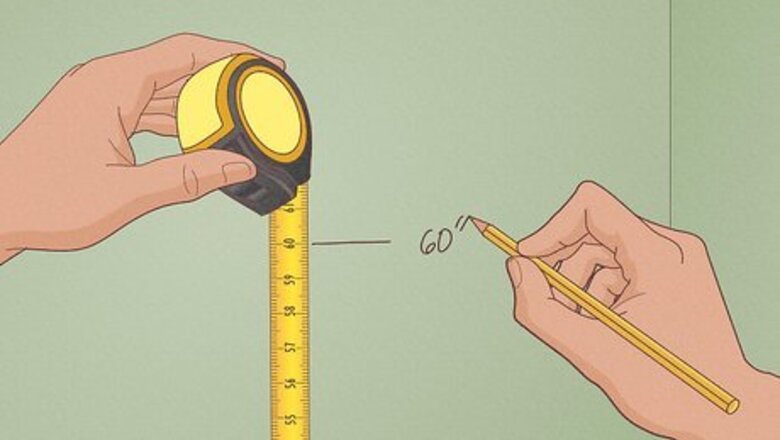
views
Building the Upper Structure

Measure for the desired height. Decide on the clearance you want underneath the bed. Measure with a measuring tape and write this figure down. Make sure to take into account any furniture that would be going under the bed.
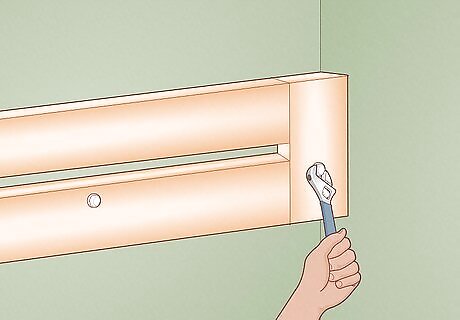
Attach the headboard to the wall. With a stud finder, locate the studs in the wall and mark the locations with painter's tape. Drill pilot holes slightly smaller than the diameter of the lag bolts you are using into the wall studs and headboard. Then, attach headboard to the wall using four 4" lag bolts and washers. Secure with a ratchet or wrench. Use a level to make sure that the headboard is straight.

Attach the sideboard. Drill pilot holes into the wall studs and sideboard piece and then attach the sideboard to the wall using eight 4" lag bolts and washers. Secure with a ratchet or wrench. Use a level to make sure that the sideboard is straight.
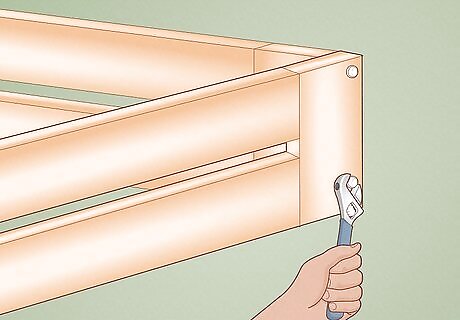
Attach the foot board. Drill pilot holes into the end of the sideboard and face of the footboard. Attach the footboard to the sideboard using two 4" lag bolts and washers.
Building the Lower Structure
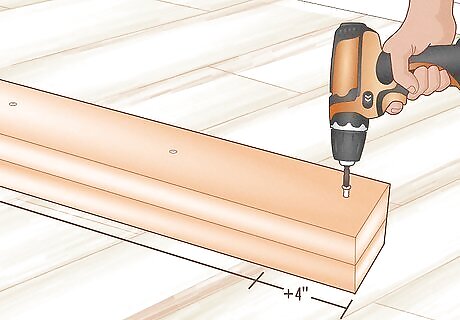
Create the support post. Cut a support post to the height of clearance plus 4" and attach both 2x4s face to face with ten 2 ½" screws. Alternate the screws on both sides of the 2x4s.
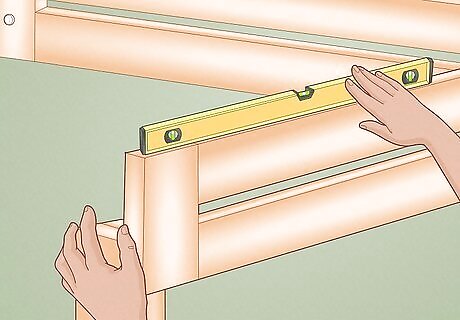
Level the post. Place a level on top of the footboard. Place the support post in position against footboard and adjust the footboard until it is level. Clamp the footboard and post together or get a helper to hold the footboard and post in place.
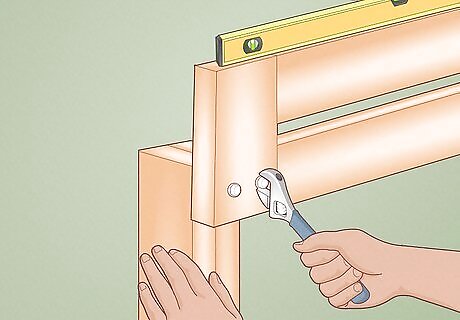
Attach the support post. Drill pilot holes into the face of the footboard and support post. Attach the footboard to the support post with two 4" lag bolts and washers.
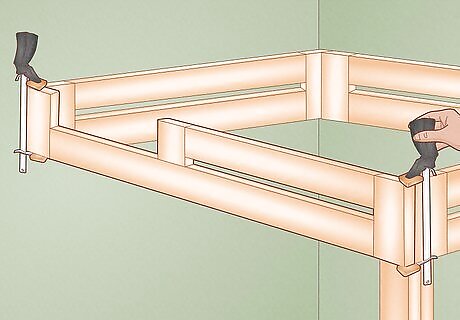
Prepare the outer board. Clamp the outer board to the support post at the proper height or get a helper to hold it in place. A level can come in handy here.
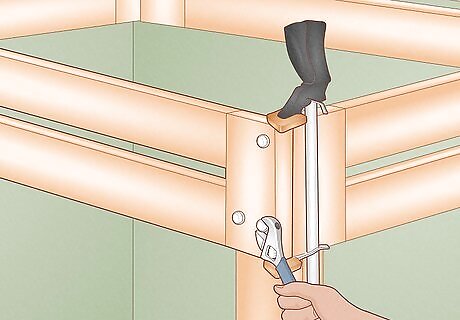
Attach the outer board. Drill pilot holes through the face of the outer board and into the ends of the headboard, footboard, and the support post. Attach the outer board to the support post, headboard and footboard using six 4" lag bolts and washers (two lag bolts each into the headboard, footboard, and support post).
Creating the Slats
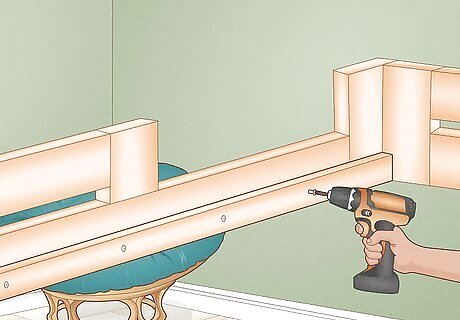
Position and attach the first slat support. Position the slat support on the inside of the outer board so that the top of slat support is even with the top of the support post. Check for level and secure the slat support in place with seven 2 ½" screws.
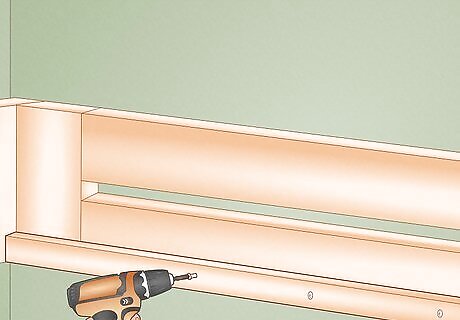
Position and attach the second slat support. Position the second slat support on the inside of the sideboard so that the top is even with the top of the support post. Check for level and secure the slat support in place with seven 2 ½" screws.
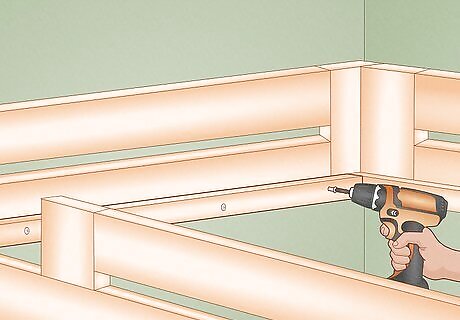
Add the first end support. Position the end support on the inside of the headboard so that the top of the end support is even with the top of the side slat supports. Secure it in place with four 2 ½" screws.
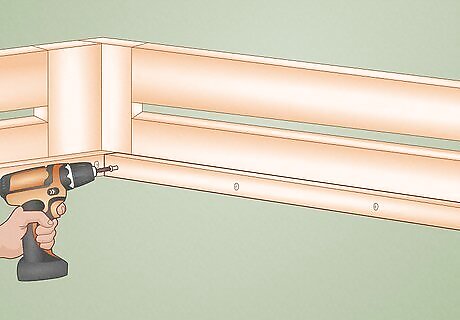
Add the second end support. Position the end support on the inside of the footboard so that the top of the end support is even with the top of slat support and the support post. Secure it in place with four 2 ½" screws.

Add in the slats. Measure and mark the locations of the fourteen slats, creating even spacing along the slat support. Attach each of the 14 slats by drilling a pilot hole at each end into the side slat supports and securing them with two 1 ½" screws.
Building the Ladder
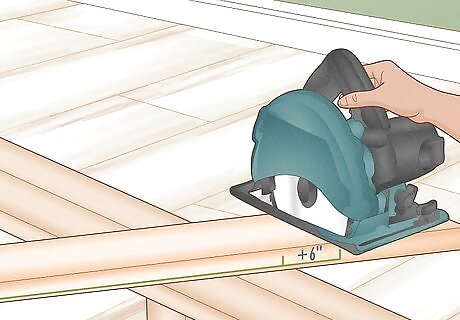
Cut the main ladder boards. Cut the 2x6s for both ladder risers to about 6" longer than the total height of the bed so far.
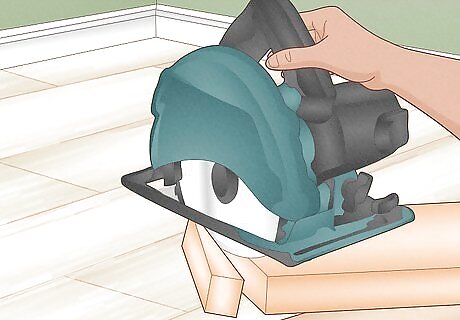
Angle the risers. Cut one of the ends of one riser to a 15 degree angle, using the miter or radial arm saw. Lean this piece, the 15 degree cut, on the ground against the outer board in its proper final position and then make a mark even with the top of the outer board. Cut this at 15 degrees also.
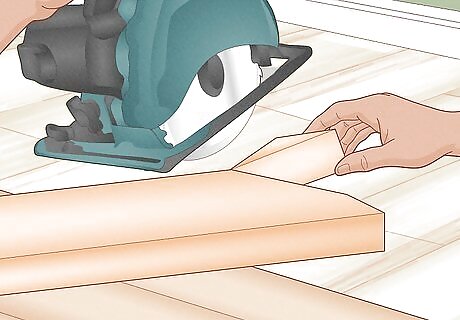
Cut the joining notches. Lean the risers back against the outer board and mark a 1 ½" deep notch on the riser. This will allow the risers to fit securely to the outer board. Cut the notch as far as possible with a rotary saw and finish the cuts with a hand or hacksaw. Use this riser as a template for the other riser and make them match.
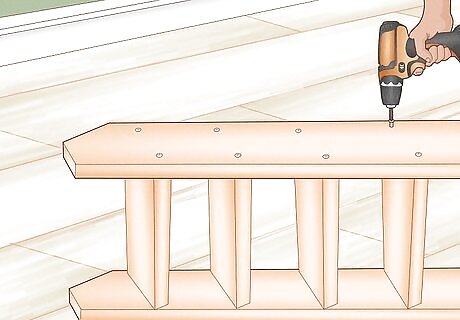
Add the ladder steps. Measure and mark the spaces between the steps of the ladder, making sure each step is level. Drill countersunk pilot holes through the face of the risers and into each step. Secure each step with four 2 ½" screws.
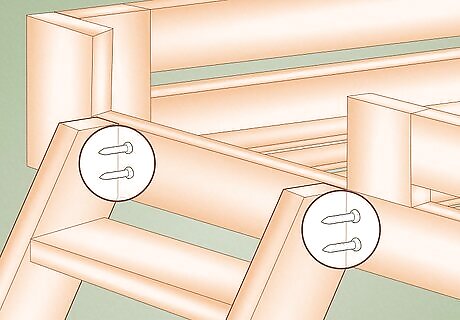
Attach the main ladder. From the inside of the outer board, drill pilot holes through outer board and into each riser of the finished ladder. Secure it in place with four 2 ½" lag bolts and washers.
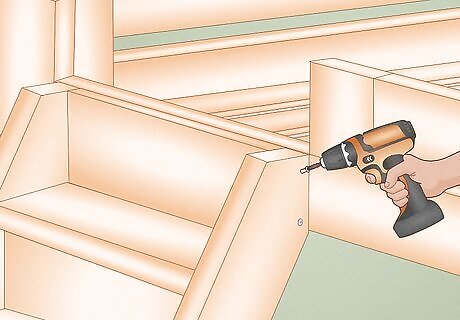
Attach the riser supports. Attach two riser supports to the ladder. Drill countersunk pilot holes through the riser supports and into the riser using four 2 ½" screws. Ensure that the top of the riser supports line up with the top of the side rail.
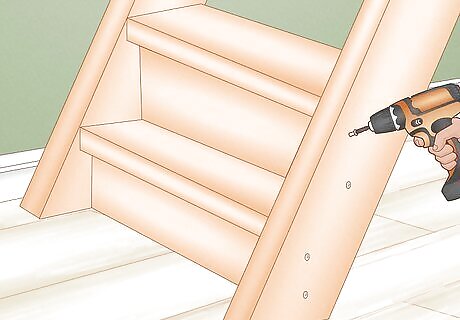
Attach the lower riser supports. Attach two raiser supports to the bottom of the ladder by drilling countersunk pilot holes through riser supports and into the ladder using four 2 ½" screws. Ensure that the bottom of the riser supports line up with the bottom of the ladder.
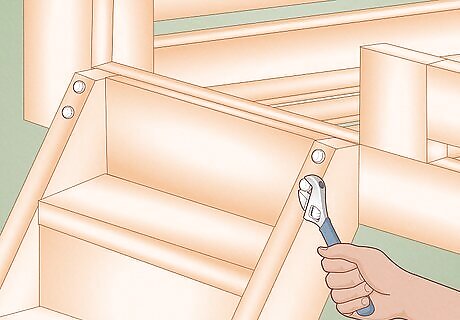
Secure the ladder. Drill pilot holes through risers and into the outer board. Secure the entire ladder assembly to the outer board using two 4" lag bolts and washers.
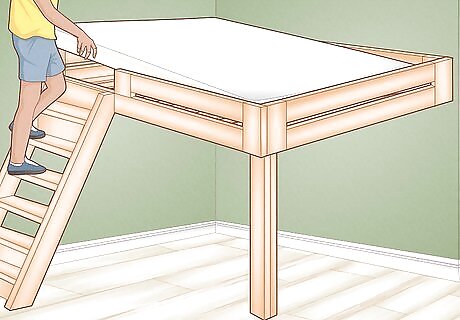
Finished. Buy a twin mattress and enjoy your new bed!

















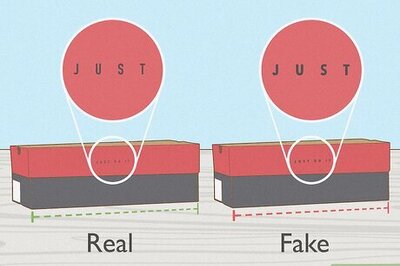
Comments
0 comment